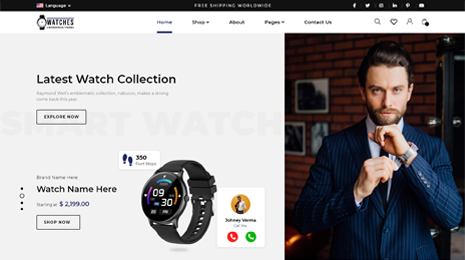We know that Gutenberg is the new WordPress editor and everybody is using this new editor to create their blogs or websites. In this blog we will see what new options you get while building a Gutenberg website.

Creating Block Templates
You can improve the writing experience with a bunch of default blocks. You can even modify what shows up in each block by default. You can choose how rigid you need to make the template. You can lock it totally (no adding new blocks, can’t eliminate/reorder existing blocks), lock insertions (no new blocks, but current blocks can be re-ordered), or have no locks and utilized the template as a beginning aide.
Building Custom Blocks
The biggest question that will arise with most WordPress theme developers is “Would it be a good idea for me to build my custom blocks from scratch in JavaScript, or utilize a plugin like Advanced Custom Fields?”
I think metaboxes make an extraordinary similarity. At the point when building a custom plugin that will be dispersed and utilized by many, similar to Genesis Title Toggle, it will be good to build your metabox from scratch. This eliminates a plugin reliance (ACF) or a packaged library (CMB2) and keeps the plugin lean.
At the point when you are building a lot of metaboxes for a particular site, it’s smarter to use a existing tool like Advanced Custom Fields, Carbon Fields, or CMB2. You will be able to give a more excellent outcome a lot quicker than if you somehow happened to build everything from scratch.
You should utilize a similar way to deal with Gutenberg blocks. If you are building a Gutenberg website for someone else then build your custom blocks with Advanced Custom Fields. At the point when a public plugin is released which includes a block, it will be built from scratch.
Kinds Of Gutenberg Sites
There are two kinds of Gutenberg sites: Simple and Custom.
Basic Gutenberg Websites
Gutenberg is a huge step ahead for simple content websites. Customers can undoubtedly assemble excellent and engaging pages of content with the core blocks. The theme development process for these websites is generally CSS. We guarantee the core blocks look incredible, coordinate the customer’s image, and can address all their content requirements.
This is ideal for non-profits who need a minimal effort, high-sway site. We utilized this methodology for CARAS and College Discount Cards.
We start by planning a style control including all the core blocks. Then the designer works with the customer to model the key pages utilizing these blocks. When the plans are affirmed, you can style the blocks and fabricate the pages like legos.
Custom Gutenberg Websites
These websites follow our conventional web advancement process. Instead of allowing the innovation to compel our design and functionality, you should initially inspect the customer’s particular requirements and note down the desired features and client experience. We at that point plan the UI, mockup all the blocks (both core and custom), and mockup the page designs important to construct the site.
In addition to styling the core blocks, we construct custom blocks to actualize features not currently in core. The above illustration of Free Together incorporates a “Table of Contents” block that progressively records and links to each heading in the article.
Is Gutenberg The Correct Choice?
You need to consider the value proposition for each task. We utilize the block editor on all sites. If we disable Gutenberg, it’s typically on a single template.
The advantages of Gutenberg include:
- Building a Gutenberg website will save us from building a more intricate site that depends intensely on custom metaboxes. We can convey a superior item quicker and less expensive.
- Numerous sites require complex substance components that are not difficult to execute as custom blocks yet hard to do with TinyMCE. For example, the RCP project required 9 custom blocks. Prior to Gutenberg, these future a blend of shortcodes with Shortcode UI, custom TinyMCE plugins and metaboxes.
- We’d preferably future-proof our ventures by utilizing the new editor as opposed to securing customers in obsolete technology.
- Here’s the “Feature Box” block we built on RCP. This is an incredible illustration of how Gutenberg can make content creation simpler. Something like this would be troublesome and convoluted to embed in TinyMCE.
If you are looking for creative WordPress themes then try out our premium WP themes available at great discounts.












